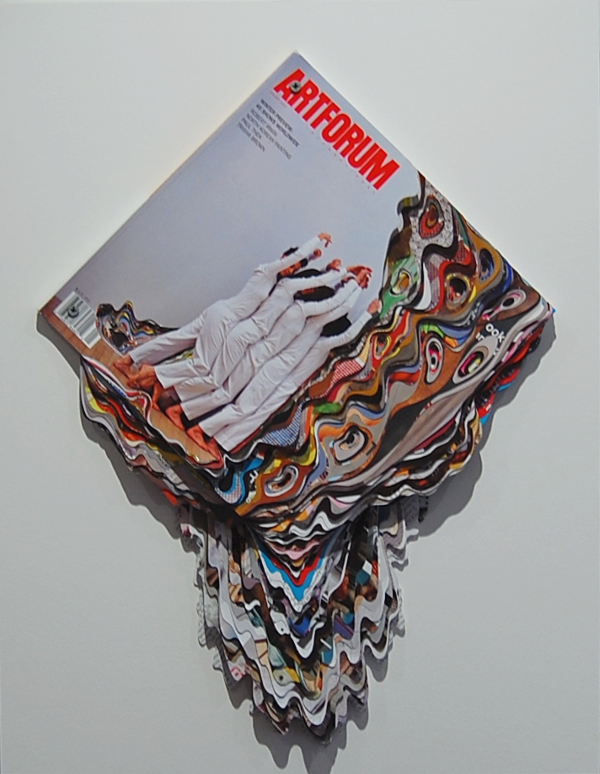Dissections and Excavations in Book Art
EXHIBITING ARTISTS
May 23 – July 6, 2013
Rebound: Dissections and Excavations in Book Art brings
together the work of five mixed media artists from around the world who
sculpt, scrape, bend and carve to create astonishing compositions using
books as a point of departure. Curated by Karen Ann Myers, Assistant
Director of the Halsey Institute of Contemporary Art, this exhibition
features works by Brian Dettmer (Atlanta), Long-Bin Chen (Taiwanese, now
living in New York), Guy Laramee (Montreal), Francesa Pastine (San
Francisco), and Doug Beube (New York). Each of these artists transforms
various types of literature and/or printed “books” through sculptural
intervention. Despite the individualistic and exclusive perspective of
each artist, they have remarkable connections in the themes and ideas
they respectively mourn and celebrate.
For generations, our society has been lamenting the loss of natural
beauty and the earth’s resources to the rising tide of industrial and
technological “progress” towards greater efficiency and luxury. With
this progression of technology, the relevance of physical books in our
culture is diminishing. The tangible, permanent information presented in
books is quickly being replaced with digital media and the Internet,
which exemplify fluidity and constant change. Books as a vessel for
accessible and easily communicated knowledge have become somewhat
antiquated. In our ever-evolving digital present, we see a variety of
once cherished technologies losing their importance and luster at an
increasingly rapid rate.
From the confusion and sense of loss that emerge out of this
condition, these artists have created their own responses. Some, like
Laramee and Chen, directly address the parallel between the
disappearance of natural spaces and books as an outdated mode of
expression; carving landscapes from the pages and bindings. Deep
crevasses, hidden caves, and awe-inspiring phenomena and landscapes
emerge from chiseled pages. Alternately, some artists, like Pastine and
Dettmer, seek to bring the books into the future, by digitizing or
technologizing them. Here, images are created that are reminiscent of
topographical or weather maps, readings from seismographs, or
cross-sections of the “bodies” of the books. These works are treated as
surgeries or dissections, as scalpels and needles are used to carve away
the books’ exteriors.
Brian Dettmer’s precise excavation of books page by page focuses on
taking something that already exists and exposing alternate histories
and memories, which reveal new relationships. Long-Bin Chen combines the
cultures of the East and West through the mixture of sculpture and
literature. Through this, we are prompted to examine the eternal
vexation of communication and the social relationship we have with
books. Guy Laramee’s work plays heavily on the idea of erosion in that
knowledge could very well be an erosive process rather than an
accumulation. In that light, he brings up the human fascination with the
content of consciousness. In turn, he examines not “what” we think
about, but “that” we think. Through the glossy publication
Art Forum,
Francesca Pastine reveals the visceral topography of art trends through
an unsolicited collaboration with the magazine and the cover artist.
Doug Beube explores the book itself, a seemingly antiquated technology
that is still purposeful in a digital age. He accepts its limited
capacity as its personality flaw, but moreover its elegance.
In the face of unsettling changes, these artists appeal to a sense of
monumentality in their work. The references to nature, religion,
science or cultural complexity allude to the idea that only concepts of
the greatest importance stand the test of time. Despite the emphasis on
the precariousness of human invention, these works do not display a
completely bleak outlook on society’s changes. The variety of color,
form and openness of composition among the works also celebrate the
ingenuity of creating something new from something old. The artworks
simultaneously celebrate and forewarn the viewers of the fine line
between monuments and ruins.




